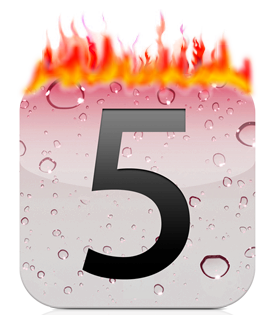iPhone 4S: Five missing features


While the iPhone 4S has been boosted on the inside with hardware modifications, including a dual-core processor and memory upgrades, it lacks a physical change of any kind on the outside. In effect, as the name would suggest, it is an iPhone 4 with a few added perks.
Nevertheless, while some will be relatively content with the device -- preloaded with iOS 5, the next generation mobile operating system -- as well as boasting faster, souped up hardware, many will notice that a few things were obviously missing from today's announcement.
Maybe we will just have to wait for the iPhone 5, after all?
1. NFC-integrated technology
It was feasible but a long shot, in my view. With Google Wallet recently out the door and available for NFC-enabled phones, Apple would have had a tough time integrating the hardware in time, not knowing Google would make the first stab at making the technology work.The wireless payment technology is still in its relative infancy, and Apple does not make a habit out of adding technologies that are not guaranteed to work, or even take off.
2. Teardrop shape
This one I find most intriguing. Obviously, the iPhone 4S is nothing short of a short-term upgrade until the iPhone 5 comes out. Many of the rumours surrounding the updated cases leaked last month show a teardrop shape, setting the technology world into a rumour frenzy.But as the iPhone 3G transformed into the updated iPhone 3GS, with the next-generation iPhone 4 breaking the mould -- only to be followed by a iPhone 4S of the same design -- I would bet that the iPhone 5 will in fact have a different design altogether.
Of course, as the rumour mill will continue to trundle along, many of these rumours will roll over in effect to the next iPhone update.
3. 4G compatibility
I was not surprised at all when this was not announced. As discussed earlier, the iPhone would need to be much larger in width -- sacrificing its "world's thinnest smartphone" tag -- in order to accommodate a larger battery.The battery alone would be necessary to maintain the 4G connection for a suitable length of time, for which the user can then recharge the phone.
For now, the technology simply does not exist in a commercial setting to have a thin smartphone, capable of reaching 4G compatibility, whilst not needing to be plugged in every few hours for a power boost.
4. Native Facebook integration
Seeing as the Facebook iPad application has yet to see the light of day, many had hoped that the upcoming social networking application would be released, or at very least announced today. Seeing as Twitter will be embedded natively in iOS 5, it would have been grand to see Facebook integration also.But as earlier reports suggest, the iPad application is still in 'hiatus' until it can be then approved by Apple. Considering Apple and Facebook are hardly the closest of industry friends, I see no reason why Apple would even do so unless it can see how it can benefit itself somehow.
It would attract more iPad users to the iTunes App Store, for sure. But seeing as the application store is already at the peak of its game, wiping the floor with its competitors, again there is little motivation on Apple's part to integrate Facebook into the iOS 5 operating system.
5. Thunderbolt connectivity
In March, Apple announced support for high-definition video output for now older iOS powered devices. All iPhone and iPad users needed was a $39 cable to port 720p and 1080i content to widescreen televisions and the like.Thunderbolt ports are roughly the same height as the standard USB port, making it suitable for other Apple hardware, like the Mac mini and the MacBook Air -- but not necessarily for something as small, thin and as light as an iPhone. A micro-HDMI out would have worked, but would have killed off a wide range of accessories and existing cables that Apple and third-party vendors already supply.
Related:
- ZDNet Live: Join us for Apple's iPhone event
- Apple's Cook: iPad is 'undisputed' top tablet worldwide
- iOS 5 will officially land on October 12; more details revealed
- Today's launch points to an 'emerging market' iPhone
- iPhone 4S is same on the outside, 'all new' on the inside
- Trade-in your iPhone 4, get $250 from Wal-Mart
More: